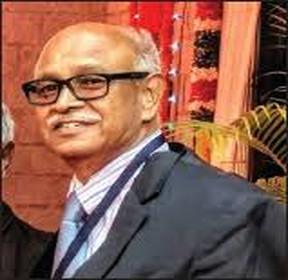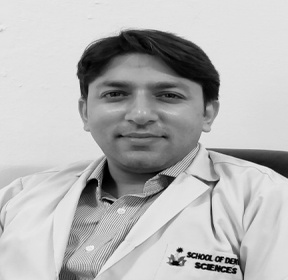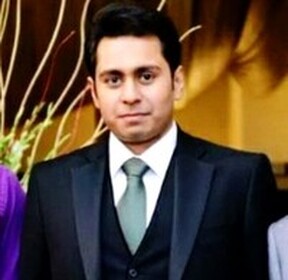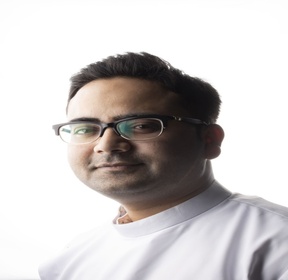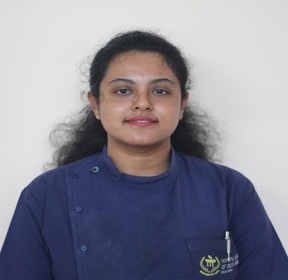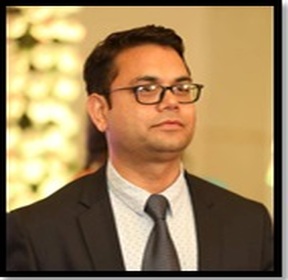Speakers
Guru Raja Rao
Private Practice IndiaTitle: Rhematoid arthritis and Chronic Periodontitis inter relationship and role of ascorbic acid
Abstract:
Rhematoid arthritis is a progressive chronic inflammatory condition affecting diathrodal joints leading to swelling deformity, pain and lack of function. Incidentally during the inflammatory phase there is elevated IL 6, IL1 B, TNF Alfa and acute phase proteins. Similarly, chronic periodontitis is common infectious condition due to poor oral hygiene. Biological and chemical irritation causing inflammation and inflammatory infiltrate leading to tissue swelling, degradation, bone destruction, mobility of teeth. In this lecture, there will be concise discussion of various factors and inflammatory products that emerge in RA and chronic periodontitis. A few modalities to suppress the inflammatory modulators will also be discussed.
Biography:
Guru Raja Rao is past president of Indian Association of Indian Society of Periodontology and Indian society of Dental Research and Oral and Maxillofacial Pathologists and Past Vice President of Indian Dental Association. He is the Member of International Association of Dental Research, American Academy of Periodontology, International Association of Oral Pathology Board of studies RGUHS, Bangalore. He is the author of Text Books Periodontology and Community Dentistry. He is the Reviewer of Indian Society of Periodontology Journal, International Journal of Oral and Maxillofacial Pathology and Editorial board of clinical contemporary Dentistry.
Hemant Sawhney
Sharda University IndiaTitle: 3D Printing in Dentistry - Sculpting the Way It Is
Abstract:
One of the most immediate emerging trends is the use of 3D printing in the field of medicine and dentistry. 3D printing technology has the potential to be very beneficial to patients and doctors in terms of patient-specific individualized management. These inventive advances have been gradually advancing into medicinal gadgets, cutting down expenses in the social insurance industry and making it less demanding for patients to oversee interminable conditions. Dental research centers can create crowns, bridges, stone models, implants and different surgical, endodontic and orthodontic appliances by strategies that combine oral scanning, 3D printing and CAD/CAM design. Current 3D printing has been utilized for the advancement of models for quite a while and it has started to discover its utilization in the realm of manufacturing. This review is focussed around the advances in additive manufacturing and its developing applications in the field of Dentistry.
Biography:
Hemant Sawhney, an alumnus of K.D. Dental College, Mathura completed his M.D.S. in Oral Medicine & Radiology in the year 2010 from Dr. B R Ambedkar University, Agra. His drive to keep abreast with latest breakthroughs in his field has motivated him to maintain intense association with academics. He has been striving continuously to upgrade his skills to master state of the art equipment with cutting edge technology. His keen interest in academics has motivated him to impart knowledge to both graduates and postgraduates students. He has been in organizing committee of CDEs and National Post Graduate Convention in the past and his zest for knowledge has led him to attend diverse workshops and conferences. His forte is diagnosing and treating patients suffering from pre-cancer lesions and conditions, maxillofacial dental radiology, chair side investigations, patients with chronic orofacial pain especially TMDs. He is a firm believer in the philosophy of “Oral Health for Overall Health”. He has 39 publications in National and International peer reviewed indexed journals.
Akif Saleem
Abad Specialized Clinics Saudi ArabiaTitle: Exploring Advances in Dental Health
Abstract:
There has been a significant amount of research into the relationship of dental or oral health with overall health of a person. It wouldn’t be an exaggerated statement but factually proven that a good dental health translates to a better overall health. For example, people with a poorer dental hygiene are more prone to have negative medical effects on other organs of the body. Bacteria in gum disease can cause heart diseases, gum infections in pregnant women may lead to premature births, higher susceptibility to gum infections in diabetics, painful mouth ulcers in STDs are just a few examples to prove the significant relation of dental health to an overall well-being. Although the importance of dental health is well appreciated in the general population today, the fears of visiting a dental facility or getting your teeth/gums treated are very common. Nearly 40% of the population, in general, are estimated to be suffering from dental fears or phobia. These numbers are alarming because, as mentioned above, any negligence in oral hygiene maintenance can have profounding negative effects on various other medical conditions. Hence, it is of prime importance that this issue of fear, anxiety is dealth with. As an educationalist or a practitioner, the best way to overcome the element of dental phobia in the society is to explore and develop not only the dental treatment modalities into fearless and painfree experiences, but also the routine oral hygiene maintenance to be made more conveniently comfortable for the users. Digitalisation in dentistry including utilisation of augmented and virtual reality, use of smart toothbrushes or teledentistry, Computer-assisted design and computer-assisted manufacture (CADCAM) technology are just to name a few revolutionary modalities which are extremely interesting when speaking of exploring advancements in dental health. The benefits of such developments in dental health can be considered as a game changer not only for the patients with phobia, but also to the practitioners to deliver better dental care with better results.
Biography:
Akif Saleem (BDS, BSc, C-Implantology, Diploma in Business of Healthcare) is related with Dental Healthcare and Healthcare Management. He has been practicing dentistry as a Dental Surgeon for over 10 years. Dr. Akif has primarily dealt with diagnostics, treatment planning and procedural interventions throughout his career. He has extensive experience in restorative, periodontal, surgical, prosthetic and endodontic procedures. He has been actively involved in patient education and awareness programs regarding oral hygiene maintenance. He was an active member of the Doctors Taskforce and Management committee responsible for steering the strategic direction of the institution(s). He has been involved with, including expansion of services provided, enhancement of procedures and linking them with the group’s strategic objectives.
Gourav Thapak
SGT University IndiaTitle: Tooth Fragment Reattachment
Abstract:
An attractive dentition and smile is very essential for both children and adults. However, Children and adolescents are frequently affected by traumatic dental injuries that mainly include coronal fractures of anterior teeth. Maxillary central incisors are the most commonly involved teeth. Usually only a single tooth is involved in dental injuries; however, various traumas such as sports injuries and automobile accidents involve multiple tooth injuries. Trauma to the anterior teeth resulting in fracture fragment requires immediate attention and prompt treatment for reachieving an attractive smile. The treatment involves simple to complex restorative intervention depending on various factors including extent of fracture line ,alveolar bone fracture, biological width violation, endodontic involvement, restorability of fractured tooth and pattern of fracture, associated root fracture, secondary trauma injuries, soft tissue status, availability of fractured tooth fragment and its condition and the prognosis of the tooth after treatment. One of the treatment plan for such cases is tooth fragment reattachment. Fractured tooth fragments reattachment can provide good and long-lasting esthetics. It restores function and provides a positive psychological response as tooth's original anatomic form, colour, and surface texture are maintained and is a relatively simple procedure. Usually, only a single tooth is involved in dental injuries; however, various traumas such as sports injuries and automobile accidents involve multiple tooth injuries. Tooth fragment reattachment not only offers cost effective but also provides a conservative, esthetic restorative option.This technique has been shown to be a good option to restore the fractured tooth compared with resin based composite or full-coverage crown. Additionally, this technique is comparatively less time-consuming and gives more predictable results. Understanding of the limitations of the treatment and patient cooperation is of utmost importance for good prognosis. When there is a substantial associated periodontal injury and/or invasion of the biological width, the restorative management of the coronal fracture should follow the proper management of those associated issues also.
Biography:
Gourav Thapak, did his Bachelor of Dental Surgery from Maharana Pratap College of Dentistry and Research Center in 2011 and completed Master of Dental Surgery in Conservative Dentistry & Endodontics from SGT Dental College and Research Institute, Haryana in 2018. He has published articles in international & National Journals. His Clinical expertise includes Single visit Root canal therapy, Splinting, Crown lengthening, Apexification, Apexogenesis, Apicectomy, Post and core, Veneers, Bleaching, Smile designing, Diastema closure, Replantation, Reattachment, Revascularization, Instrument retrieval, Surgical endodontics, Retreatment, Perforation repair, Hemisection, Bicuspidization, Microabrasion etc.
Mehuli Kar
Manipal University IndiaTitle: Immunotherapy: A New Ray of Hope
Abstract:
Surgery is the first thing we think of when it comes to the treatment of oral cancer. Why not try something less invasive? Carcinoma of head and neck has a complex relation with the human immune system. With time the advancement of molecular biology and genetics have opened new doors of immunotherapy. In this poster we will brief on the interaction of human immune system with the tumor cells and how it has through its various mechanisms by using multiple agents such as monoclonal antibodies, anti OX-40, checkpoint inhibitors, adoptive cell transfer, vaccination, oncocytic virus therapies and cytokines combat the fatal brunt of cancer. We will give an insight about biomarkers and use of immunotherapy as an adjuvent with chemotherapy and radiotherapy. We will further give an outline of studies held under random phase trials with platinum based chemotherapy and anti PD L1 therapy and will shortly explain its long term benefits in the coming years.
Biography:
Mehuli Kar Jabe completed BDS at the age of 25 years from Manipal College of Dental Sciences, Manipal University. She is currently working as a general dentist at Dental Earth Dental Clinic, Newtown, Kolkata. She has presented 3 posters during her undergraduation and currently working on a survey project.
Vinay Kumar Gupta
King George's Medical University IndiaTitle: Dental Fluorosis: Indicator for Skeletal Fluorosis
Abstract:
Fluorosis is extensively prevalent in India and is a core problem of public health concern. Around six million Indian population is poorly affected because of fluorosis. At Several places in our country, groundwater is richly supplemented with fluoride and large numbers of Indian population depends on groundwater for various purposes. Ingestion of very high levels of fluoride over a longer period of time fallouts in dental as well as skeletal fluorosis depending on years he stayed in particular endemic area. Initial symptoms of exposure to high quantity of fluoride include, burning sensation and aches in hand and feet, stiff joints, weak muscles, decreased appetite, gastrointestinal problems and weight loss. In the later stages, long bones usually affected with osteoporosis and calcification of the bones also occur. In further stages, bones and joints become weak making movement of person difficult and tender. Fusion of vertebrae is a common finding in several areas of spine particularly in the cervical areas of spine. In more severe cases spinal canal becomes narrow with calcification of the neural arch and intervertebral foramina. Late manifestation of skeletal fluorosis results in “Poker back” spine where the whole spine seems as one continuous column of backbone. In the last stage, the patient is crippled. In a routine orthopedics outpatient department majority of patients complain about pain in joints, chronic fatigue and stiffness of joints etc. and quite often for these complaints consultant prescribe opioids, NSAID and other anti-inflammatory and analgesics drugs as management. These patients also comprise those patients who are also suffering from skeletal fluorosis. So, these patients are getting symptomatic treatment. There are many clinical symptoms of skeletal fluorosis that mimic to arthritis and other skeletal disorder hence skeletal fluorosis could be easily misdiagnosed. Fluoride level estimation in urine can be estimated easily that gives an idea of patient affected with skeletal fluorosis. Dental fluorosis can be an indicator for skeletal and non-skeletal fluorosis.
Biography:
Vinay Kumar Gupta, BDS, MDS is the Professor and Head at King George's Medical University, India. His field of work includes Fluorosis, Tobacco, Preventive dentistry, screening of oral cancer, School oral health program, oral health education.

